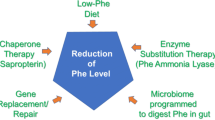Summary
Persistent trimethylaminuria in children is caused by autosomal recessively inherited impairment of hepatic trimethylamine (TMA) oxidation due to deficiency of flavin monooxygenase 3 (FMO3) secondary to mutations in the FMO3 gene. Trimethylaminuria or ‘fish odour syndrome’ is due to excessive excretion into body fluids and breath of TMA derived from the enterobacterial metabolism of dietary precursors. The disorder is present from birth but becomes apparent as foods containing high amounts of choline or of trimethylamine N-oxide (TMAO) from marine (sea or saltwater) fish are introduced into the diet. In our experience, trimethylaminuria (FMO3 deficiency) in children is rare. We have compared the dynamics and diagnostic efficacy of choline loading with marine fish meals in six children with trimethylaminuria. Loading with a marine fish meal provides a simple and acceptable method for confirmation of diagnosis of suspected trimethylaminuria in children, with the effects being cleared more quickly than with a choline load test. However, oral loading with choline bitartrate allows estimation of residual oxidative capacity in vivo and is a useful adjunct to molecular studies. Patients homozygous for the ‘common’ P153L mutation in the FMO3 gene showed virtual complete lack of residual TMA N-oxidative capacity, consistent with a nonfunctional or absent FMO3 enzyme, whereas a patient with the M82T mutation showed some residual oxidative capacity. A patient compound heterozygous for two novel mutations, G193E and R483T, showed considerable residual N-oxidative capacity. A further patient, heterozygous for two novel sequence variations in the FMO3 gene, consistently showed malodour and elevated urinary TMA/TMAO ratios under basal conditions but a negative response to both choline and marine fish meal loading. Comparison of the effects of administration of antibiotics (metronidazole, amoxicillin, neomycin) on gut bacterial production of trimethylamine from choline showed they all reduced TMA production to a limited extent, with neomycin being most effective. ‘Best-practice’ diagnostic and treatment guidelines are summarized.
Similar content being viewed by others
References
Ackerman BR, Lemass H, Chow LML, et al (1999) Trimethylaminuria is caused by mutations of the FMO3 gene in a North American cohort. Mol Genet Metab 68: 24–31.
Al-Waiz M, Ayesh R, Mitchell SC, Idle JR, Smith RL (1988) Trimethylaminuria (‘fish-odour syndrome’): a study of an affected family. Clin Sci 74: 231–236.
Ayesh R, Mitchell SC, Zhang A, Smith RL (1993) The fish odour syndrome: biochemical, familial, and clinical aspects. Br Med J 307: 655–657.
Boriello SP, Reed PJ, Bain MD, et al (1987) The possible role of anaerobes in methylmalonic aciduria—an inherited metabolic disease. In: Drasar BS, Duerden BI, Hudson MJ, Lysons RJ, eds. Recent Advances in Anaerobic Bacteriology. Dordrecht: Matinus Nijhoff, 319–321.
Chalmers RA, Bain MD, Iles RA (2003) Diagnosis of trimethylaminuria in children: marine fish versus choline load test. J Inherit Metab Dis 26(supplement 2): 224.
Danks DM, Hammond J, Schlesinger P, Faull K, Burke D, Halpern B (1976) Trimethylaminuria: diet does not always control the fishy odor. N Engl J Med 295: 962.
Dolphin CT, Janmohamed A, Smith RL, Shephard EA, Phillips IR (1997) Missense mutation in flavin-containing mono-oxygenase 3 gene, FMO3, underlies fish-odour syndrome. Nature Genetics 17: 491–494.
Fraser-Andrews EA, Manning NJ, Ashton GHS, Eldridge P, McGrath JA, Menagé H du P (2003) Fish odour syndrome with features of both primary and secondary trimethylaminuria. Clin Exp Dermatol 28: 203–205.
Hernandez D, Addou S, Lee D, Orengo C, Shephard EA, Phillips IR (2003) Trimethylaminuria and a human FMO3 mutation database. Hum Mutat 22: 209–213.
Higgins T, Chaykin S, Hammond KB, Humbert JR (1972) Trimethylamine-N-oxide synthesis: a human variant. Biochem Med 6: 392–396.
Holmes HC, Burns SP, Michelakakis H, et al (1997) Choline and L-CARNITINE as precursors of trimethylamine. Biochem Soc Trans 25: 96S.
Humbert JR, Hammond KB, Hathaway WE, Marcoux JG, O’Brien D (1970) Trimethylaminuria: the fish-odour syndrome. Lancet 2: 770–771.
Lee WG, Yu JS, Turner BB, Murray KE (1976) Trimethylaminuria: fishy odors in children. N Engl J Med 295: 937–938.
Mitchell SC, Smith RL (2001) Trimethylaminuria: the fish malodour syndrome. Drug Metab Dispos 29: 517–521.
Murphy HC, Dolphin CT, Janmohamed A, et al (2000) A novel mutation in the flavin-containing monooxygenase 3 gene, FMO3, that causes fish-odour syndrome: activity of the mutant enzyme assessed by proton NMR spectroscopy. Phamacogenetics 10: 439–451.
Seibel BA, Walsh PJ (2002) Trimethylamine oxide accumulation in marine animals: relationship to acylglycerol storage. J Exp Biol 205: 297–306.
Spellacy E, Watts RWE, Goolamali SK (1979) Trimethylaminuria. J Inherit Metab Dis 2: 85–88.
Treacy EP, Ackerman BR, Chow LML, et al (1998) Mutations of the flavin-containing monooxygenase gene (FMO3) cause trimethylaminuria. A defect in detoxication. Hum Mol Genet 7: 839–845.
Treacy E, Johnson D, Pitt JJ, Danks DM (1995) Trimethylaminuria, fish odour syndrome: a new method of detection and response to treatment with metronidazole. J Inherit Metab Dis 18: 306–312.
Yamazaki H, Fujieda M, Togashi M, et al (2004) Effects of dietary supplements, activated charcoal and copper chlorophyllin, on urinary excretion of trimethylamine in Japanese trimethylaminuria patients. Life Sci 74: 2739–2747.
Yancey PH, Clark ME, Hand SC, et al (1982) Living with water stress: evolution of osmolyte systems. Science 217: 1214–1222.
Zhang AQ, Mitchell SC, Smith RL (1999) Dietary precursors of trimethylamine in man: a pilot study. Food Chem Toxicol 37: 515–520.
Zschocke J, Kohlmueller D, Quak E, Meissner T, Hoffmann GF, Mayatapek E (1999) Mild trimethylaminuria caused by common variants in FMO3 gene. Lancet 354: 834–835.
Author information
Authors and Affiliations
Corresponding author
Additional information
Communicating editor: Rodney Pollitt
Competing interests: None declared
Rights and permissions
About this article
Cite this article
Chalmers, R.A., Bain, M.D., Michelakakis, H. et al. Diagnosis and management of trimethylaminuria (FMO3 deficiency) in children. J Inherit Metab Dis 29, 162–172 (2006). https://doi.org/10.1007/s10545-006-0158-6
Received:
Accepted:
Issue Date:
DOI: https://doi.org/10.1007/s10545-006-0158-6




